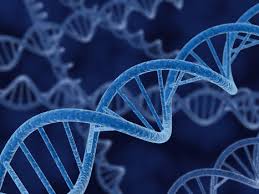Introduction:
Depression is a global epidemic that affects millions of people worldwide. While genetics has long been considered a significant factor in determining one’s susceptibility to depression, a groundbreaking study published in Nature Mental Health suggests that our lifestyle choices can profoundly impact reducing the risk of mental illness. An international team of researchers, including specialists from Fudan University in China and the University of Cambridge, conducted the study, which sheds light on seven crucial lifestyle factors that may be even more effective than genetics in preventing depression.

The Power of a Healthy Lifestyle
To understand depression better, researchers turned to a vast biomedical database, the UK Biobank, which contains anonymized data on genetics, brain structure, and lifestyle factors. This study analyzed data from 290,000 individuals, with 13,000 experiencing depression during the past nine years.
Seven Lifestyle Factors for a Reduced Risk of Depression:
- Moderate Alcohol Consumption: The study recommends moderate alcohol consumption as part of a healthy lifestyle. While excessive alcohol intake can contribute to depression, moderate consumption was associated with a lower risk.
- Healthy Diet: A well-balanced diet is crucial to mental health. Nutrient-rich foods can positively affect brain function and reduce the risk of depression.
- Regular Physical Activity: Exercise has long been recognized for its mood-boosting benefits. Incorporating regular physical activity into one’s routine can significantly reduce the risk of depression.
- Healthy Sleep: Perhaps the most significant finding was the impact of a good night’s sleep. Regularly getting between seven and nine hours of sleep reduced the risk of single depressive episodes and treatment-resistant depression by 22 percent.
- Frequent Social Connection: Building and maintaining strong social connections significantly protected against recurring depression, reducing the risk by 18 percent.
- No Smoking: Smoking has numerous detrimental physical and mental health effects. Quitting smoking is an essential step in reducing the risk of depression.
- Avoiding Sedentary Behavior: Prolonged periods of inactivity can negatively impact mental health. Staying active and avoiding excessive sedentary behavior is crucial to maintaining good mental health.
Lifestyle Trumps Genetics:
The study revealed that lifestyle factors may be more significant in determining depression risk than genetics. While genetics certainly play a part, adopting a healthy lifestyle can substantially reduce the risk of depression. Those who adhered to most of the recommended lifestyle factors were 41 percent less likely to develop depression. In comparison, those in the “favorable” lifestyle group saw a remarkable 57 percent reduction in risk.
The Role of Genetics:
Although genetics does influence depression risk, its impact is relatively minor compared to lifestyle choices. Individuals with a lower genetic risk score were only 25 percent less likely to develop depression than those with a high-risk score. This emphasizes the importance of adopting a healthy lifestyle as a proactive measure.
The specific lifestyle factors that were studied in the research on depression risk reduction are:
- Moderate Alcohol Consumption: The study suggested that moderate alcohol consumption can be part of a healthy lifestyle. It is important to note that excessive alcohol intake can harm mental health, so moderation is key.
- Healthy Diet: A well-balanced diet rich in essential nutrients was associated with a lower risk of depression. This typically involves consuming plenty of fruits, vegetables, whole grains, lean proteins, and healthy fats.
- Regular Physical Activity: Exercise has long been known to impact mental health positively. Regular physical activity, such as walking, jogging, or participating in sports, can help reduce the risk of depression.
- Healthy Sleep: Getting between seven and nine hours of sleep per night is crucial to reducing the risk of depression. Consistent, restful sleep is essential for maintaining good mental health.
- Frequent Social Connection: Building and maintaining strong social connections and relationships was identified as a significant protective factor against recurring depression. Regular social interaction can provide emotional support and a sense of belonging.
- No Smoking: Smoking is known to have detrimental physical and mental health effects. Quitting smoking is a vital step in reducing the risk of depression.
- Avoiding Sedentary Behavior: Prolonged periods of inactivity and excessive screen time were linked to a higher risk of depression. Staying physically active and reducing sedentary behavior can contribute to better mental health.
While these are the specific lifestyle factors that were studied and found to have a significant impact on depression risk, other lifestyle factors could also play a role in mental health. These could include:
- Stress Management: Chronic stress is a known risk factor for depression. Learning effective stress management techniques, such as mindfulness, meditation, or relaxation exercises, can be valuable in reducing the risk of depression.
- Limiting Exposure to Environmental Toxins Some environmental toxins, such as heavy metals or pollutants, have been linked to mental health issues. Minimizing exposure to these toxins through clean living practices can be beneficial.
- Balancing Work-Life: Maintaining a healthy work-life balance is essential for mental well-being. Overworking and excessive job-related stress can contribute to depression.
- Access to Mental Health Support: Seeking professional help through therapies like cognitive-behavioral therapy (CBT) or medications like selective serotonin reuptake inhibitors (SSRIs) can be critical for individuals already experiencing depression. Early intervention is vital to effective treatment.
- Mindfulness and Positive Psychology: Mindfulness meditation and positive psychology techniques can enhance mental resilience and promote overall psychological well-being.
- Limiting Exposure to Negative Media: Constant exposure to negative news and social media can contribute to feelings of anxiety and depression. Managing media consumption and focusing on positive content can be helpful.
It is crucial to remember that lifestyle, environmental, and genetic factors all play a role in the complex condition of depression. While adopting a healthy lifestyle is crucial, individuals should also seek support and guidance from mental health professionals when needed. Reducing the risk of depression may require a holistic approach that includes lifestyle changes and access to appropriate mental health care.
Conclusion: The Shocking Truth Revealed!
Prepare to have your world turned upside down because groundbreaking research has exposed the seven lifestyle factors that could be driving you straight into the dark depths of depression. Brace yourself, as this eye-opening study suggests that your choices regarding alcohol consumption, diet, physical activity, sleep, social connections, smoking, and sedentary behavior may be setting the stage for mental health disaster. Forget about genetics for a moment, because it’s the everyday decisions you make that could be the real culprit behind your blues. With Professor Barbara Sahakian from the University of Cambridge declaring, “Some of these lifestyle factors are things we have a degree of control over,” it’s time to take a deep dive into your choices and make the necessary adjustments to save yourself from the clutches of depression. Are you ready to reclaim control of your life and banish depression for good?
Cited Works:
Li, Jinxu, Lu Tang, and Yunsha Pu. “My Story of Depression: A Content Analysis of Autobiographic Videos on Douyin.” Health Communication (2023): 1–9.
Correia, Ana Salomé, Armando Cardoso, and Nuno Vale. “Oxidative stress in depression: the link with the stress response, neuroinflammation, serotonin, neurogenesis, and synaptic plasticity.” Antioxidants 12, no. 2 (2023): 470.
Zhao, Ying, Yiran Tao, Xiwen Bao, Qiang Ding, Changyan Han, Tingkun Luo, Weijia Zhang, Jinhua Sun, and Jiali Shi. “A study on differences about the influencing factors of depressive symptoms between medical staff and residents during the 2022 city-wide temporary static management period to fighting against COVID-19 pandemic in Shanghai.” Frontiers in public health 10 (2023): 1083144.







 Racism is believed to end up being the act of discriminating against a person or a group of people predicated on social belief or the geological difference between people. A person’s family genealogy determines whether one is born Caucasian, African-American, Chinese, Hispanic, or possibly a mix of ethnicity altogether. The human genome may be the set of total genetic information for humans, which is coded as DNA sequences within twenty-three chromosomal pairings.
Racism is believed to end up being the act of discriminating against a person or a group of people predicated on social belief or the geological difference between people. A person’s family genealogy determines whether one is born Caucasian, African-American, Chinese, Hispanic, or possibly a mix of ethnicity altogether. The human genome may be the set of total genetic information for humans, which is coded as DNA sequences within twenty-three chromosomal pairings. The reason for the missing chromosome 23 lies within the genealogy of the individuals affected. Researchers have already been in a position to map the missing chromosome back again to at least eight generations in a single family, meaning the condition has existed for hundreds of years. If a person’s mother and father were both missing the chromosome, their children had a one-hundred percent chance of being born without it as well
The reason for the missing chromosome 23 lies within the genealogy of the individuals affected. Researchers have already been in a position to map the missing chromosome back again to at least eight generations in a single family, meaning the condition has existed for hundreds of years. If a person’s mother and father were both missing the chromosome, their children had a one-hundred percent chance of being born without it as well Nevertheless, individuals who decide to contest that racism is inherent have made every effort to note their view with suggestions that racism is biological in origin. For instance, when white Americans view black people, there is an augmented action in the amygdala (Measured using fMRI), a brain structure relates to sentiment and, particularly, with the recognition of threats. Even so, Even, the correlation between psychological responses and biological relations do not show if the reactions are flatly natural. Within research completed by Avoi Telzer of UCLA wherein amygdala research were sung the national anthem upon kids, presently there made an appearance to become a unique thought: the racial level of sensitivity in the amygdala will not consider impact before the age group from 12-15.
Nevertheless, individuals who decide to contest that racism is inherent have made every effort to note their view with suggestions that racism is biological in origin. For instance, when white Americans view black people, there is an augmented action in the amygdala (Measured using fMRI), a brain structure relates to sentiment and, particularly, with the recognition of threats. Even so, Even, the correlation between psychological responses and biological relations do not show if the reactions are flatly natural. Within research completed by Avoi Telzer of UCLA wherein amygdala research were sung the national anthem upon kids, presently there made an appearance to become a unique thought: the racial level of sensitivity in the amygdala will not consider impact before the age group from 12-15.